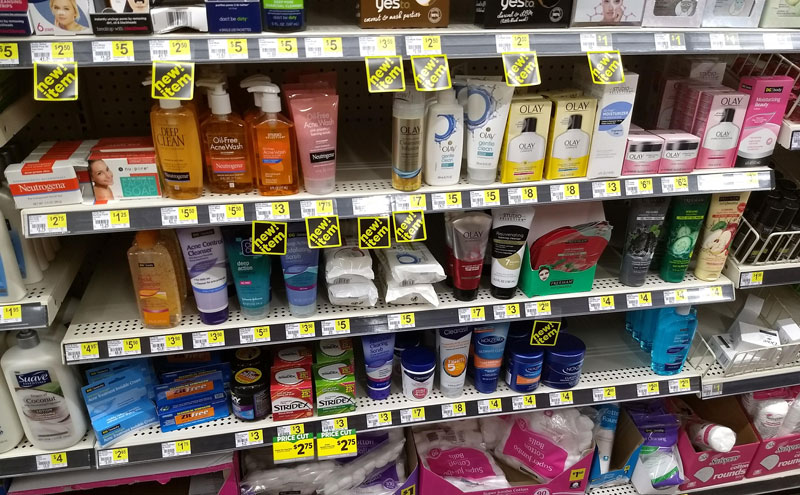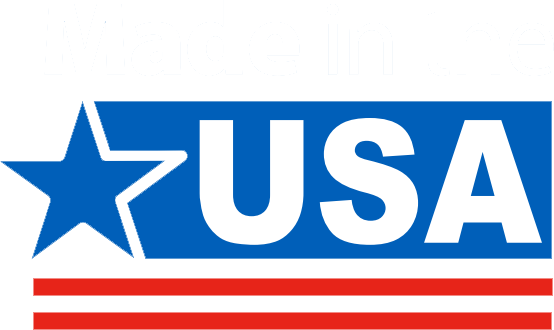A review of common ingredients found in 5 popular face washes and 3 more natural and affordable alternatives.
The popularity of Rachel Hollis’ new book "Girl, Wash Your Face" got us wondering if it matters what we use to wash our faces.
There are a dizzying number of face washes on the market. You can spend big bucks at a department or specialty store or just a few dollars at a big box retailer. Either way, you might be surprised by the ingredients found in your face wash. It’s not just a question of avoiding chemicals that might be toxic or too harsh on your skin — it is also a question of efficacy and value for your money. Do the ingredients in your face wash give you clean skin at a reasonable price, or are you "washing" your money down the drain?
In their marketing campaigns, companies make a lot of promises about what their face wash can do for your skin, and there are plenty of face washes on store shelves that claim to be "natural" and use “gentle” ingredients. But companies do not need approval from the FDA for the ingredients they put in cosmetics, except certain coloring additives. And while cosmetics makers can be held liable if they make a product that puts consumers in danger, the burden is on the consumer to take them to court and prove they knowingly put you at risk by exposing you to specific ingredients — take the lawsuits regarding a supposed link between talcum powder and cancer as an example.
So smart shoppers should ignore the marketing slogans and read the ingredients.
We’ve analyzed the ingredients of five popular face wash brands that we found on the shelves of a local big-box store:
- Aveeno Positively Radiant Skin Brightening Daily Scrub (full ingredients)
- Biore Deep Pore Charcoal Cleanser (full ingredients)
- Cetaphil Gentle Skin Cleanser (full ingredients)
- Neutrogena Oil-Free Acne Wash (full ingredients)
- Oil of Olay Gentle Clean Foaming Cleanser (full ingredients)

Six Common Ingredients in the Face Washes We Analyzed
*Unless otherwise noted, information on ingredients comes from 10001 Chemicals in Everyday Products by Grace Ross Lewis, the Environmental Working Group’s Skin Deep Database , and Cosmetics Info (a website of The Personal Care Products Council).
So what exactly are some of the ingredients in your typical off-the-shelf face wash, and do they work? While companies are required to list the ingredients in cosmetic products using common names, sometimes it feels like you need a chemistry degree just to pick out soap. So let’s first break down a few of the common ingredients we found in all or most of the five products.
- Water — All five of the face washes we selected have water as the first ingredient. You will probably find this is the case in most liquid cosmetic products. When you buy a bottle of liquid face wash off the shelf, a lot of your money goes towards shipping the liquid water inside it. It’s also worth noting that the presence of water in the product typically means the manufacturer also needed to include preservatives, emulsifiers, and other chemicals to make the product shelf-stable. But if you still prefer to buy liquid face wash over simpler alternatives (which we will list at the end of this post), then you might get more for your money with a bar soap. For example, the Neutrogena Transparent Facial Bar typically sells for 78.6 cents per ounce compared to 91.7 cents per ounce for the liquid face wash.
- Surfactants & Emulsifiers — Many face wash ingredients with confusing names can be categorized as surfactants and/or emulsifiers. Sodium Lauryl Sulfate (found in all five products we analyzed) is perhaps the most well-known and controversial. Other common ingredients that fall in this category include: sodium C14-16 olefin sulfonate, Cocamidopropyl betaine, sodium hydroxide, PEG-80 sorbitan laurate, PEG-16 Soy Sterol, and Sodium Lauroamphoacetate. Emulsifiers keep the ingredients in the face wash mixed together. Surfactants lower the surface tension of water. In other words, they make water “wetter” so it will remove dirt, oil, and other undesirable things from your skin. They also help give face wash the foamy texture we have all come to associate with deep cleaning (think scrubbing bubbles for your face). These chemicals can be either naturally derived or synthetic. Some surfactants and emulsifiers are created using a process called ethoxylation--look for ingredients starting with PEG for examples. The process can create a byproduct called 1,4-Dioxane which is a known carcinogen and has been found to be contaminating some cosmetic products. However, the FDA does occasionally monitor products for levels of 1,3-Dioxane and has seen a significant decrease in contamination since it began doing so in the 1970s.
- Parabens — Found in three of the five face washes we analyzed (Aveeno, Biore, and Cetaphil), parabens are preservatives. The main job of parabens is to prevent microbes from developing in the liquids. Of the eight total ingredients in the Cetaphil, three are parabens (Methylparaben, Butylparaben, Propylparaben). This makes us expect that water makes up a very large portion of the recipe. Parabens are controversial because they have the ability to mimic estrogen. This has led to concerns that exposure to parabens could lead to infertility and increased risks of certain cancers. The FDA has not taken any action against the use of parabens because the law only allows them to do so if there is enough reliable scientific evidence showing that the ingredient causes harm to humans. Meanwhile, the cosmetic industry maintains that parabens are safe and effective at keeping harmful microbes out of beauty products.
- Fragrances — This category of ingredients seems straightforward enough — fragrances are added to make both you and the product smell nice. In truth, it is a little more complicated than that. When you see fragrance listed on a cosmetic product, it is not one single ingredient. It is typically a mix of many ingredients which do not get listed on most ingredients labels. Cosmetic companies are not required to share the exact ingredients in order to protect the secrecy of their proprietary recipes. But some companies are beginning to offer more transparency about fragrance ingredients. For example, Proctor and Gamble has committed to “share online all fragrance ingredients down to 0.01 percent for its entire product portfolio in the U.S. and Canada by the end of 2019”. You can already read a list of possible ingredients found in P&G cosmetic products. The length of the list (69 pages) reveals just how many non-listed ingredients you might find in your face wash if it includes fragrance in the printed list.
- Emollients & Skin Conditioners — Emollients and skin conditioners are ingredients that moisturize the skin. These are important because other ingredients will remove the natural oils that keep your skin soft. Emollients and conditioners can be either synthetic or botanically derived.
For example, glycerin is a popular choice for cosmetics and is the second ingredient in three of the five face washes we analyzed (Avenno, Biore, Oil of Olay). Glycerin can be synthetically derived or be sourced naturally from animals or plants. Other examples of emollients and skin conditioners in the five products include, Propylene Glycol, Castor Oil, Sorbitol, and Ethylhexylglycerin. - Acne Fighting Ingredients — Two of the face washes include ingredients designed specifically for treating and preventing acne. The Neutrogena Oil-Free Acne Wash contains Salicylic Acid. A beta hydroxy acid, Salicylic Acid is a common ingredient in acne-fighting cosmetics. The main concern about this ingredient is that it can make your skin more susceptible to UV radiation. There are more natural alternatives available, however. The Biore Deep Pore Charcoal Cleanser contains charcoal powder, for example. This natural ingredient is claimed to help remove dirt and oil from skin to prevent and treat acne, though there is little scientific evidence available about its effectiveness.

Are These Ingredients Safe?
You will find plenty of differing opinions online about the safety and efficacy of chemical ingredients used in cosmetics. In their undiluted form, almost all are considered skin irritants and are certainly harmful if swallowed. Because water is the number one ingredient in the final product, you can reasonably guess that these chemicals actually amount to a very small percentage of what you’re actually putting on your skin. Of course, the more products you use containing these chemicals, the greater your exposure, and little is known about the long-term effects of regular exposure to synthetic chemicals through cosmetic products.
Do These Ingredients Work?
You will see a lot of science-like marketing on TV and in magazines about special formulas that penetrate the skin and use a miraculous plant-based formula to both clean your skin and leave it hydrated--but is any of it true? Most of the ingredients in liquid face wash are really just there to keep the ingredients from separating or spoiling.
In truth, the water and a few surfactants and emollients in these products do the real job of removing makeup, excess oil, sweat, and dirt from your face without leaving your skin dry and irritated. As long as you aren’t looking for a magic potion that fixes all your beauty problems, you may find a store-brand face wash that works just as well for you as the name brands.
What’s a Girl to Do?
We found three affordable alternatives to retail face washes that we wanted to share with our readers:
- Oil-Cleansing Method — Take control of your destiny and make your own face wash. One popular simple DIY face wash recipe only requires two ingredients -- olive oil and castor oil. This popular method has many followers and you can find more information and recipes from bloggers like the Wellness Mama. In short, the solution that is ¼ castor oil and ¾ olive oil. Put a drop about the size of a quarter on your hand, and then massage on a dry face. Next, place a hot wet washcloth on your face for about a minute before using the other side to gently remove oil from your face. Since you won’t be wasting money on packaged water and cosmetic companies’ marketing ventures, you can choose to splurge on really high-end oils like this expeller-pressed castor oil and this organic extra-virgin olive oil, or simply buy the best quality oils you can afford at your local grocery store.
- Castile Soap — The popular Dr. Bronner's Castile Soap offers a more traditional soap feel without synthetic preservatives or emulsifiers. The plain unscented bar or liquid soap are best for sensitive skin, but you can also shop for other varieties like tea tree if you have acne-prone skin. Because the liquid variety is very concentrated, you will only need a small amount mixed with water to wash your face — making this a very affordable alternative. If you crave a foamy feeling in your face wash, try diluting the castile soap with water and using a foaming dispenser.
- Shop Online for Cleaner Cosmetics — If you don’t have access to a store selling natural personal care and beauty products nearby, or you simply don’t want to pay department store prices, then try an online retailer like The Honest Company. Shopping online allows you to more easily research ingredients and compare prices. You can save on beauty products you use frequently with The Honest Company subscription program.





